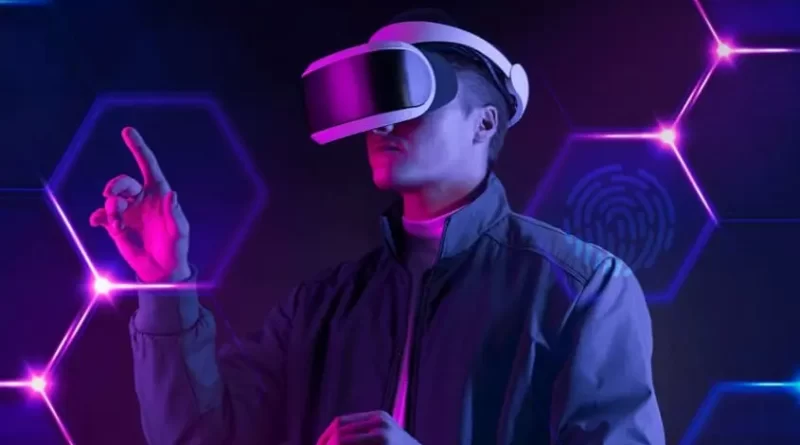The Science Behind Optics for Smart Glasses and Virtual Reality Headsets
The science behind optics for smart glasses and virtual reality headsets involves understanding the basics of optics, the types of optics used in these devices, the role of optics in resolution and field of view, and correcting optical aberrations. Advanced design techniques and technologies are used to create optics that offer clear, distortion-free images
Optics plays a crucial role in delivering an immersive virtual reality (VR) experience. The quality of optics determines the clarity, field of view, and image sharpness in smart glasses and VR headsets. The advancement in optics technology has revolutionized the VR industry by making it more immersive and real-life.
The history of optics for smart glasses and VR headsets dates back to the 1960s, where researchers used bulky and complex equipment to create a rudimentary virtual environment. However, the emergence of miniaturized optics technology has enabled the creation of lightweight and high-performance smart glasses and VR headsets.
In recent years, the development of optics technology has been exponential, with innovations such as waveguide optics, diffractive optics, and reflective optics making VR headsets and smart glasses more compact and efficient.
Optics technology has played a significant role in the expansion of VR applications across industries such as healthcare, education, and entertainment. In healthcare, VR headsets are used to simulate surgeries and train medical personnel. In education, VR technology is used to create interactive learning environments. And in the entertainment industry, smart glasses and VR headsets offer a more immersive gaming experience.
Understanding the basics of optics
Optics is a crucial aspect of smart glasses and virtual reality headsets. Understanding the basics of optics is essential to comprehend how these devices work. Light is the foundation of optics, and its properties, such as reflection, refraction, and absorption, determine how it interacts with different materials.
The principles of optics, including Snell’s Law and the Huygens-Fresnel Principle, describe how light behaves when it passes through different media. Optics in smart glasses and VR headsets use various technologies, including refractive, reflective, waveguide, and diffractive optics, to create immersive experiences for the users.
The optics in these devices convert digital information into light waves, which are then projected onto the user’s eyes. This process creates the illusion of a virtual environment, allowing users to interact with digital objects in real-time. In conclusion, optics is a critical component of smart glasses and VR headsets, enabling users to experience immersive virtual environments.
Types of optics for smart glasses and VR headsets
When it comes to smart glasses and virtual reality (VR) headsets, optics play a crucial role in providing a high-quality experience. Optics are responsible for displaying the virtual world, and it’s important to choose the right type of optics to ensure optimal display quality. There are several types of optics used in smart glasses and VR headsets, each with its own advantages and disadvantages. In this article, we’ll discuss the different types of optics used in smart glasses and VR headsets.
- Refractive Optics: Refractive optics use lenses to bend light, creating a virtual image that appears to be in front of the wearer’s eyes. These lenses can be either convex or concave and are used to magnify or reduce the size of the image. Refractive optics are commonly used in VR headsets, where the goal is to create a high-resolution, immersive experience.
- Reflective Optics: Reflective optics use mirrors to reflect light and create a virtual image. These mirrors are usually curved to reflect light correctly. Reflective optics are commonly used in smart glasses, where the goal is to create a clear, high-resolution image that appears in front of the wearer.
- Waveguide Optics: Waveguide optics use a combination of lenses and mirrors to create a virtual image that is projected onto the user’s eye. These optics are commonly used in smart glasses, where the goal is to create a compact design that is easy to wear.
- Diffractive Optics: Diffractive optics use a series of lenses with varying thicknesses to diffract light, creating a virtual image. These optics are commonly used in holographic displays and are still being developed for use in smart glasses and VR headsets.
Optics and Resolution
A. Relationship between optics and image resolution
Optics plays a critical role in image resolution, especially in smart glasses and virtual reality headsets. The relationship between optics and image resolution can be explained by the concept of pixel density, which refers to the number of pixels per unit of distance.
B. Display Resolution
The display resolution of a smart glass or VR headset determines the maximum pixel density that the optics can provide. In other words, the display resolution sets the upper limit of image resolution that can be achieved through optics. Currently, the most common display resolution for VR headsets is 1080 x 1200 pixels per eye. However, high-end VR headsets such as the Oculus Quest 2 provide a display resolution of 1832 x 1920 pixels per eye, which allows for sharper and more detailed images.
C. Lens Resolution
The lens resolution is another critical factor in determining the image resolution of smart glasses and VR headsets. The lens resolution is determined by the quality of the lenses and the precision of the manufacturing process. The higher the lens resolution, the sharper and more detailed the image will be.
D. Role of Optics in Reducing Motion Blur
Optics can also help reduce motion blur in smart glasses and VR headsets. Motion blur occurs when an object moves quickly across the field of view and appears blurred. This effect is particularly noticeable in fast-paced games and can negatively affect the immersive experience.
High-quality optics can reduce motion blur by allowing for faster refresh rates and reducing the amount of light that passes through the lenses. This results in a more responsive and clearer image, which is essential for an immersive VR experience.
Field of View (FOV) and Optics
The field of view (FOV) is an essential factor that determines the overall virtual reality (VR) experience. It refers to the angle of the image that the human eye can see while wearing VR headsets or smart glasses. Optics play a crucial role in determining the FOV and, in turn, the user’s immersion level in the VR environment.
Definition of FOV
FOV can be defined as the extent of the observable area that the user can see while wearing smart glasses or VR headsets. It is measured in degrees and usually ranges from 90 to 120 degrees. A wider FOV means a more immersive experience, as the user can see more of the virtual world and feel more present within it.
Relationship between FOV and Optics
The FOV of VR headsets and smart glasses is determined by the design of the optics. The lenses used in these devices are responsible for controlling the angle of light that reaches the user’s eyes, which in turn determines the FOV. Optics with a larger diameter can offer a wider FOV. However, this can lead to distortion and aberration at the edges of the lens, affecting the overall quality of the image.
Optics for Wide FOV Optics for wide
FOV require a delicate balance between optical design and image quality. A waveguide system can offer a wider FOV without compromising image quality. Waveguide optics use light-guiding structures to bend and focus the light from a display into the user’s eyes, creating a wider FOV. Another way to achieve a wide FOV is by using curved lenses that distribute light more evenly across the field of view, resulting in less distortion.




